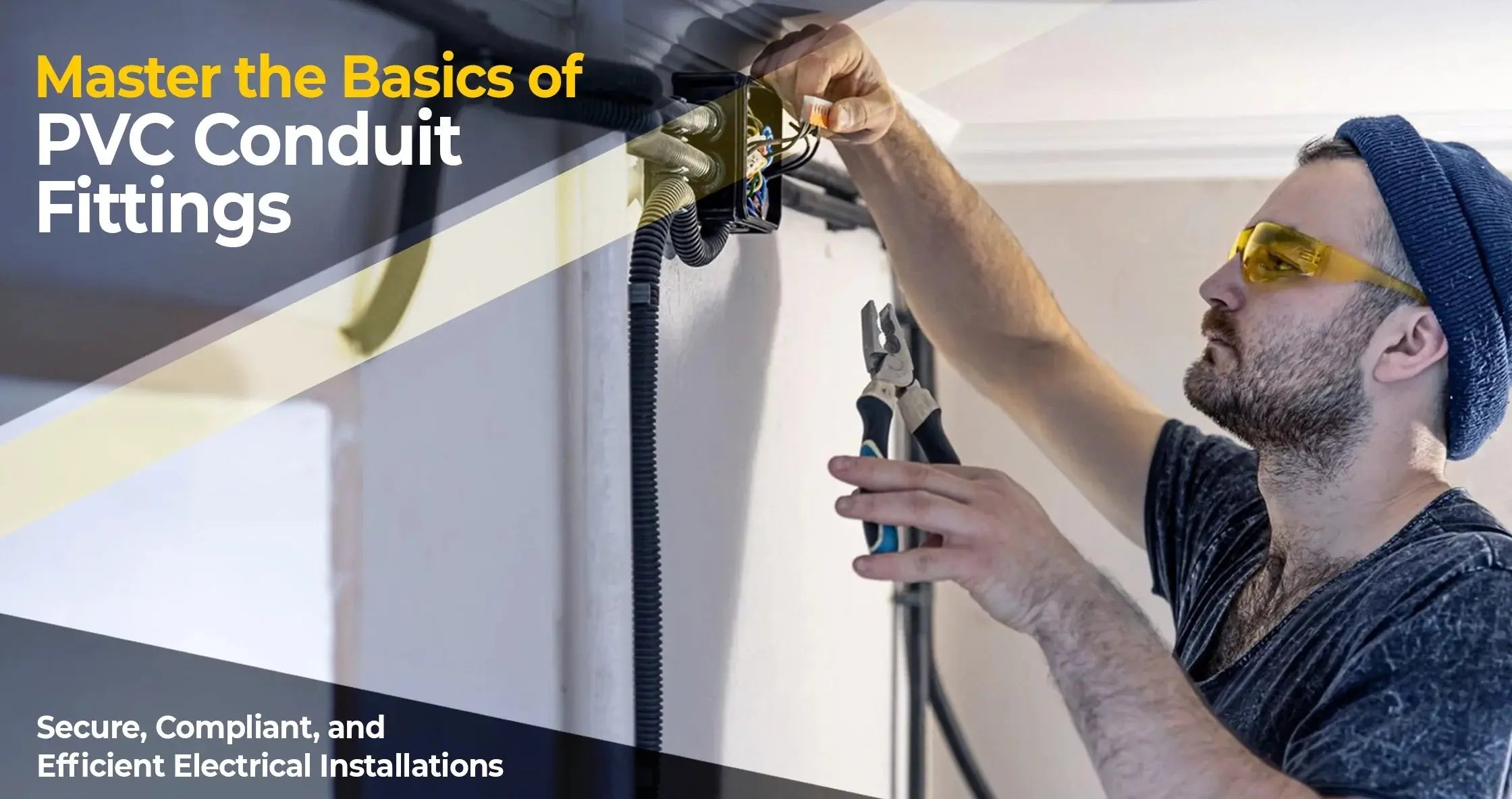PVC conduit fittings are vital components in electrical projects, ensuring safe and efficient routing of wiring. Their application ranges from residential to industrial settings, making them an essential part of electrical systems. Understanding the types of PVC electrical conduit fittings can help you choose the right components for your projects, ultimately leading to improved safety and compliance. In this article, we will explore the top PVC conduit fittings you need for your electrical projects.
1. Understanding PVC Conduit Fittings
1.1 What Are PVC Conduit Fittings?
PVC conduit fittings are designed to connect sections of PVC conduit, allowing for safe routing of electrical wires. These fittings play a crucial role in protecting wiring from physical damage, moisture, and environmental factors. Common types include connectors, elbows, couplings, and junction boxes, each serving specific functions to ensure a secure electrical installation.
1.2 Importance of Choosing the Right Fittings
Selecting the appropriate PVC fittings is essential for maximizing the longevity and reliability of your electrical system. Quality fittings provide a safe and organized pathway for electrical wiring, preventing potential hazards such as short circuits and fire risks. Additionally, ensuring compliance with local electrical codes is crucial for safety and legal standards.
2. Clipsal Conduit Fitting 40mm PVC Gray 242/40
2.1 Overview
The Clipsal Conduit Fitting 40mm PVC Gray 242/40 is an excellent choice for various electrical applications. This fitting is made from durable PVC, ensuring longevity and resistance to harsh environmental conditions. It effectively connects two sections of conduit, maintaining a secure pathway for wiring.

2.2 Benefits
- Durable gray PVC design for longevity.
- Easy installation with solvent cement.
- Provides safe and secure electrical connections.
3. Solid Elbow Conduit 90° PVC 25mm
3.1 Overview
The Solid Elbow Conduit 90° PVC 25mm is vital for navigating corners in conduit runs efficiently. Its 90-degree bend allows electrical wiring to change direction smoothly without compromising safety.
3.2 Benefits
- Designed to minimize resistance in electrical flow.
- Ensures a secure fit with minimal labor.
- Ideal for tight spaces and complex wiring layouts.
4. Types of PVC Conduit Fittings
4.1 Common Types
Understanding various types of PVC conduit fittings is essential for effective installations. Key types include:
- Connectors: Used to join two pieces of conduit.
- Couplings: Extend conduit runs by connecting two sections end-to-end.
- Elbows: Allow for changes in direction, available in various angles.
- Tee Connectors: Facilitate branching in conduit systems.
4.2 Factors to Consider
When choosing PVC conduit fittings, consider factors such as compatibility with existing conduit systems, environment (indoor vs. outdoor), and local electrical codes. Ensure that the materials used are resistant to moisture and physical damage to enhance the longevity of your electrical installation.
5. Installation Tips for PVC Conduit Fittings
5.1 Tools and Materials
Before installation, gathering the right tools and materials is crucial for success. Essential tools include a conduit cutter, tape measure, deburring tool, PVC solvent cement, and appropriate fittings. Proper preparation ensures a smooth installation process and reliable connections.
5.2 Installation Steps
- Measure and cut conduit pieces to required lengths.
- Deburr edges to ensure a smooth fit.
- Apply solvent cement to the fittings and conduit ends.
- Insert and twist the conduit ends into the fittings for a secure bond.
Following these steps will result in a neat and effective installation of PVC conduit fittings, crucial for electrical safety and compliance.
6. Conclusion: The Importance of Quality PVC Conduit Fittings
Choosing the right PVC conduit fittings, such as the Clipsal Conduit Fitting 40mm PVC Gray 242/40 and the Solid Elbow Conduit 90° PVC 25mm, is essential for any electrical project. These components not only enhance the safety and functionality of your electrical systems but also ensure compliance with local regulations. Investing in quality fittings can significantly reduce the risk of electrical faults and enhance the overall reliability of your installations.
Frequently Asked Questions (FAQ)
What materials are PVC conduit fittings made from? PVC conduit fittings are primarily made from durable polyvinyl chloride (PVC), designed to resist environmental factors and ensure longevity in electrical installations.
How do I install PVC conduit fittings? Installation involves measuring and cutting conduit lengths, deburring edges, applying solvent cement, and securely connecting fittings. Always ensure alignment and proper sealing to prevent leaks.
Why is it important to use quality fittings? Quality fittings provide better security, durability, and compliance with electrical codes, reducing the risk of short circuits and enhancing the safety of the electrical system.


